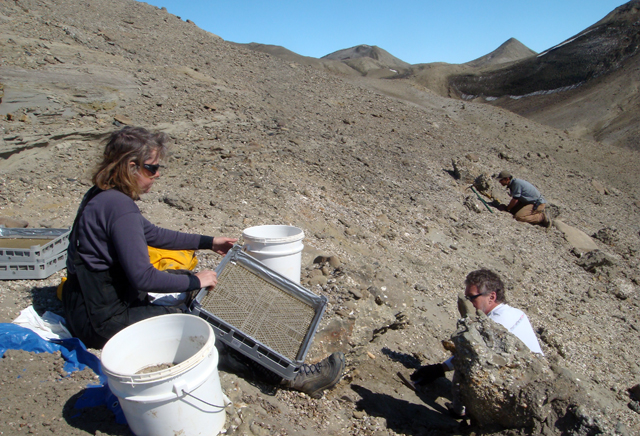Page 2/2 - Posted January 14, 2011
Antarctica important radiation point for modern birdsThe idea of Antarctica as a cradle for species isn’t without precedent. Julia Clarke The new species, Vegavis iaai, was collected in 1992 by scientists from Argentina on Vega Island off the Antarctic Peninsula. Clarke and her U.S. and Argentine team re-examined the material more than a decade later. It offered some of the best fossil evidence to date that linked modern bird divergence, the spread of today’s species, before the K-T boundary — when geologic time turned the page from the Cretaceous to the Tertiary period after the mass extinction of the dinosaurs. MacPhee said such evidence about the Vega waterfowl helps turn the Sherwin-Williams model upside down. “It does suggest the southern end of the world is not as biogeographically irrelevant as it’s been previously — inadvertently perhaps — thought to be.” Clarke will join MacPhee and several other paleontologists, including dinosaur fossil experts, on this latest expedition to the islands near the Antarctic Peninsula in February 2011. “I’m really excited to have the opportunity after looking at all of the Antarctic material to go down there,” Clarke said. “I’ve never been to Antarctica, and I’m very excited to see what we’ll find.” MacPhee hopes the fourth time is the charm. His first try in 2007 was largely frustrated by heavy snow on the ground that made finding the small fossils he would expect to find nearly impossible. The ancient marsupials would be about the size of modern shrews, up to 100 grams in weight — something that could easily fit in the palm of your hand. [See previous article: Bridge to the past.] A freak storm in 2008 wrecked the team’s field camp, forcing an early end to their season. Last year, sea ice conditions prevented the research vessel carrying the scientists to access the islands except for two days. [See previous article: A big blow.] Despite the setbacks, MacPhee is willing to commit another two months to his search for mammalian fossils. “I feel it’s important. People have to be willing to put up with some pain and suffering if they have any expectations of being successful,” he said philosophically. “Antarctica is not going to be kind. We already know that with regard to how hard it has been to collect mammalian or indeed any vertebrate fossils.” The team hopes to begin its search on Vega Island, where Clarke’s avian fossils were found. Other likely expedition sites include nearby Seymour and James Ross islands, where others have found fossils from younger geological periods. In fact, Argentinean scientists recently uncovered ancient turtle fossils on Seymour Island dating from roughly 45 million years ago that don’t belong to any species known to live in the region during that time period. The scientists expect to spend long hours on their hands and knees, crawling along the ground hoping to spy interesting-looking bits. “I’m somewhat sanguine, although you have to recognize the realities. That next rock that you needed to kick over to find that tooth that was going to explain all of this might be the very rock that you ignore,” he said. “For my purposes it’s worth doing, because I think the Antarctic part of mammalian divergence and diversification story in the latter part of the Cretaceous is the part that we know least about. Virtually any evidence would suggest new possibilities.” NSF-funded research in this story: Ross MacPhee, American Museum of Natural History, Award No. 0636639
|



For USAP Participants |
For The Public |
For Researchers and EducatorsContact UsU.S. National Science FoundationOffice of Polar Programs Geosciences Directorate 2415 Eisenhower Avenue, Suite W7100 Alexandria, VA 22314 Sign up for the NSF Office of Polar Programs newsletter and events. Feedback Form |




